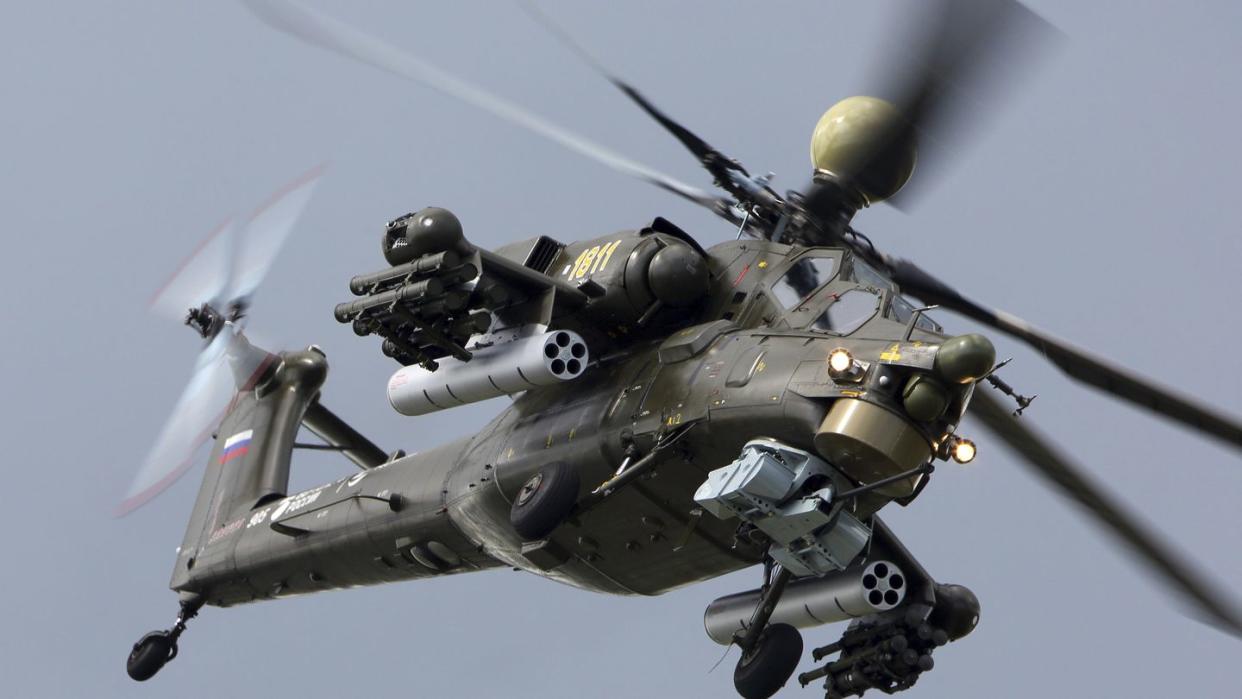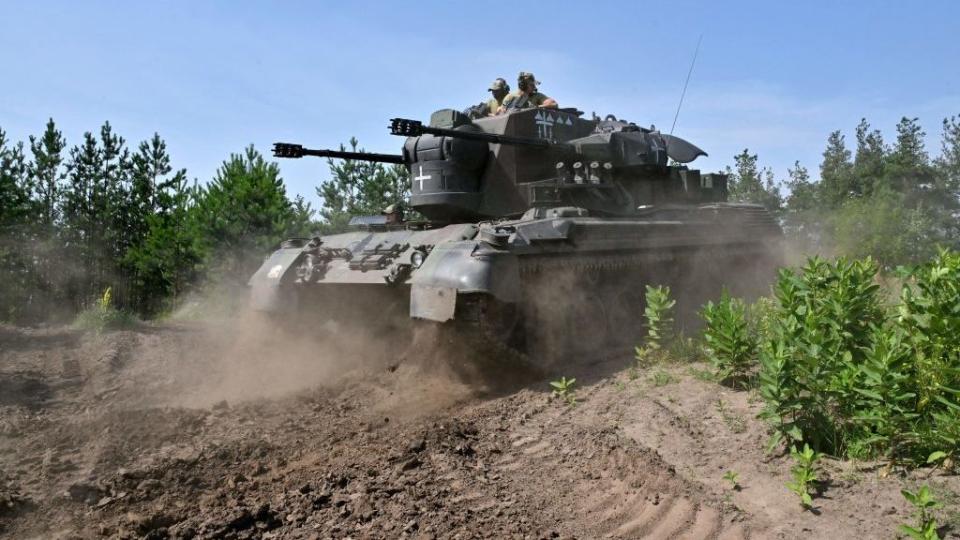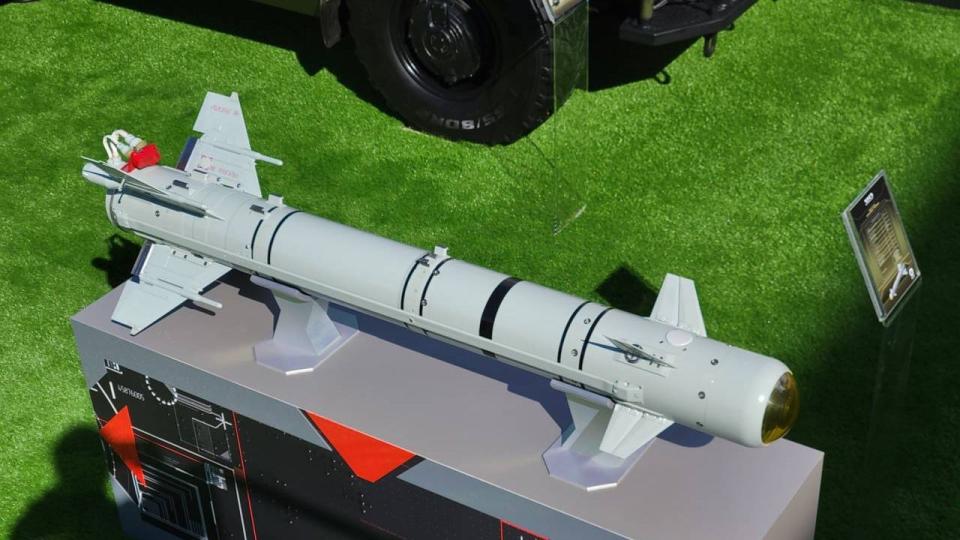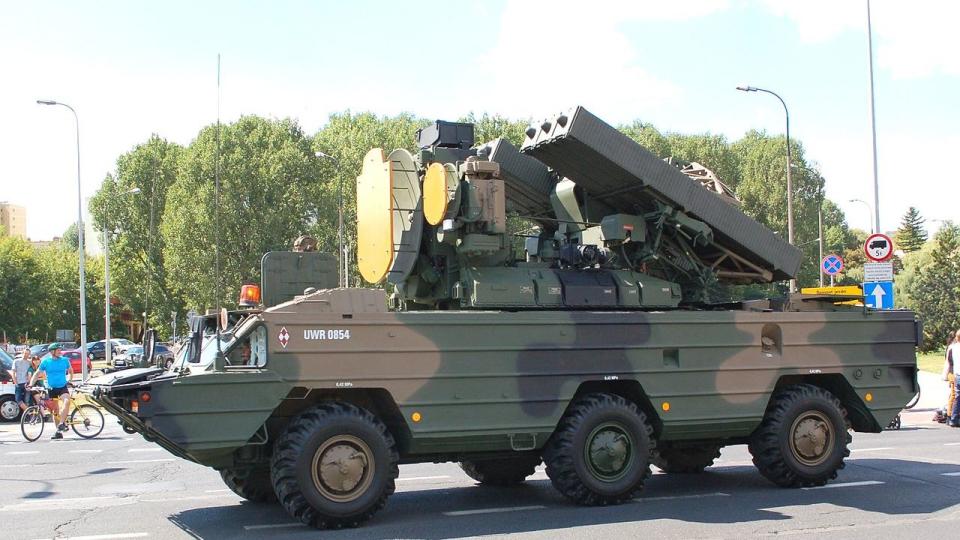Russian Airpower Is Threatening Ukraine's Counteroffensive More and More Every Day

It’s uncommon for Russian and Ukrainian narratives war to concur. But since Ukraine began its major counteroffensive in June, both countries agree that Russia’s tactical airpower poses a growing problem for Ukraine’s ground forces.
That may seem surprising given the general arc of the conflict, in which Russia’s qualitatively and quantitatively superior tactical air force (the VKS) has proven unable or unwilling to execute strikes deep into Ukrainian airspace—largely due to Ukraine’s extensive Soviet-era ground-based air defenses, now reinforced by more modern Western weapons.
Indeed, Russian airpower hasn’t prevented Ukraine’s counteroffensive from creeping forward several miles along three or four main axes of advances, with recent victories around Klischivka, Staromaiorske, Robotyne, Kozachi Laheri, and Urozhaine. But anti-tank missiles and glide bombs lobbed by Russian aircraft, combined with dense minefields and field fortifications, have contributed to making those Ukrainian advances more time-consuming and costly.
Airpower: The Army’s Fire Brigade
Military analysts expected that Russian advances would rely on its airpower edge to blunt Ukraine’s counteroffensive. Aviation assets can be rapidly surged and reallocated across the frontline in response to unexpected threats, serving as a first-responder ‘fire brigade’ to bail out ground forces fighting for survival.
That happened during Ukraine’s surprise Kharkiv counteroffensive last September. Russian warplanes surged to provide cover for fleeing Russian forces, pressing riskier attacks and sustaining higher losses. They couldn’t stop Ukrainian forces from advancing, but they covered the Russian retreat and bought vital time to establish a new line of defense around Svatove.
Russian Ka-52 engaging a Ukrainian armored column in #Zaporizhzhia on June 8th, 2023 pic.twitter.com/gtKwhgn4UK
— FUNKER530 (@FunkerActual) June 9, 2023
The Ukrainian 47th and 33rd Mechanized Brigade’s failed massed armor attack early in June at Mala Tokmachka highlights another issue—while manned aviation struggles often struggles to identify ground targets in cover (at least without help from drone or ground spotters), concentrations of armored vehicles advancing down roads or across open fields make for ideal targets for attack helicopters and ground attack aircraft.
Russian Jets and Helicopters Are Using More Standoff-Range Weapons
A fundamental distinction between Russian and NATO airpower is the that latter is primarily using standoff-range precision-guided weapons by now, and the former is still mostly using unguided rocket and bombs. Russia has actually developed many different varieties of such weapons, but doesn’t have anywhere near the needed volume to use them routinely, and only a minority of VKS aircraft have the necessary targeting pods to use them effectively.
So, for much of the war, Russian warplanes have mostly been used as fast-reacting rocket artillery, briefly popping up from low altitude to release volleys of unguided 80-millimeter S-8 or 122-millimeter S-13 rockets in an arcing trajectory from afar to minimize exposure to short-range air defense.
Video of Russian Su-25 aircraft launching rockets at Ukrainian positions reportedly in Nevelske.https://t.co/0mi0YMFvBs pic.twitter.com/2aZrTy3WaX
— Rob Lee (@RALee85) October 27, 2022
Such scattered volleys can disrupt Ukrainian units forming up to attack, but don’t cause as much attrition as the precision strikes Western air force can deliver at greater depth.
However, Russia’s tactical aviation has phased in new types of standoff-range guided weapons over the last year. For the VKS’s Su-34 and Su-35S fighter-bombers (and by mid-2023, older Su-24 bombers, too), that most notably includes the UMPK satellite-guided glide bomb, a relatively cheap upgrade kit for standard FAB-500 M62 low-drag bombs. Allegedly, hundreds have been built since production began around October of 2022.
The UMPK mates a jam-resistant Kometa-M satellite-navigation system to fold-out wings, giving the ‘dumb’ bomb a standoff range supposedly up to 43 miles (but likely less than that, according to aviation expert Piotr Bukowski). Inspired by—but cruder than—the American JDAM bomb kit, UMPKs haven’t proven especially precise. They also appear prone to abruptly falling off aircraft, resulting in multiple explosions on Russian soil in March and April.
But they can be released by high-flying aircraft a safe distance from air defense on the frontline, or Ukraine’s border. And their large blast radius can still cause much chaos and destruction on Ukrainian border communities, barracks, and forward command posts, as well as disrupt ground forces massing for an attack.
A very rare video from the cockpit of a Russian Sukhoi Su-34 bomber of the moment of the launch of two FAB-500M62 UMPK guided bombs over Kherson Oblast of Ukraine. pic.twitter.com/91KFgXqYXi
— Status-6 (@Archer83Able) August 14, 2023
Russia is also apparently deploying lighter 551-pound class bombs with UMPK kits (see below), and is allegedly developing them for huge 3,307-lb. bombs as well.
Саперы подрывают ФАБ-250 с комплектом УМПК. Как можно заметить несмотря на все свои недостатки и этот комплект начали ставить и на 250ки. Похоже проблемы с нештатными сходами боеприпаса и частыми несрабатываниями взрывателя никого не останавливают и УМПК становится более массовым pic.twitter.com/bgNV9n7rA3
— Andrei_bt (@AndreiBtvt) July 7, 2023
At lower altitude, Russian helicopters are employing the new izdeliye 305 LMUR guided anti-tank missiles on single or double launcher-rails. The heavy 231-pound missile (including an unusually powerful 130-pound warhead), has a standoff range of 8.7 miles and can either be used in fire-and-forget mode (for closer targets using an optical/infrared seeker), or less precisely towards distant targets (using inertial and satellite guidance). In this maximum range mode, the missile transmits a video feed to a datalink attached to the helicopter, allowing the gunner to eventually designate a specific target once the missile is close enough to spot one.
Since June of 2022, dozens of videos show combat tests of LMUR by Russian Ka-52 and Mi-28NM attack helicopters, and specialized marks of the Mi-8 transport helicopter (the Mi-8MNP-2 and Mi-8AMTSh-VN special ops helicopters). Roughly 80% of these tests targeted static targets like buildings or bridges.
Video of Russian Mi-28MN attack helicopters launching Izdelie 305 LMUR missiles. The footage shows them operating with Mi-8AMTSh helicopters. https://t.co/rU8EnO9LUWhttps://t.co/q8DhBdQgq8 pic.twitter.com/kWTnPGepFD
— Rob Lee (@RALee85) January 15, 2023
Using the LMUR’s maximum range requires some powerful eyes, either in the form of advanced sensors or spotters closer to the target. Russia’s new Ka-52M model attack helicopter appears to include an improved GOES-451M electro-optical sensor turret that can detect tanks up to 9.3 miles away, or 7.5 miles using the thermal channel. However, older models may struggle to fully leverage LMUR’s maximum range.
Alongside LMUR, Russian helicopters used the older 9M120 Ataka (AT-9 Spiral II) missile, radio-controlled missile (range 3.7 miles), and 9K121 Vikhr laser-beam riding guided missile (6-7.5 miles).
Meanwhile, for precision strikes at deeper targets like artillery and air defense, Russia is doubling down on one of its few undeniably successful new platforms—the Lancet-3 kamikaze drone—with acquisition of the target typically first performed by a longer-endurance Orlan-10 surveillance drone.
#Ukraine:A Ukrainian CAESAR 155mm self-propelled howitzer was destroyed by a Russian Lancet loitering munition in #Zaporizhzhia Oblast. The driver avoided the first drone, flipping over the SPH, but the second one managed to hit it later leading to the destruction of the vehicle. pic.twitter.com/FXAbn4EAtq
— 🇺🇦 Ukraine Weapons Tracker (@UAWeapons) June 23, 2023
Despite maintaining a substantial miss rate and sometimes failing to destroy targets hit, footage of Lancet strikes confirms that they have destroyed or damaged dozens of artillery systems—including many Western ones delivered by NATO—as well as air defenses.
A May report states that Lancets have become Russia’s preferred weapon for counter-battery attacks against Ukrainian artillery.
Attacking Beyond the Air Defense Umbrella
Another problem for Ukrainian forces is that, when they lunge towards Russian lines, they’re unavoidably distancing themselves from their own air defense umbrella.
Medium- and long-range air defense systems are high-value targets (both in a military and financial sense). Thus, both sides keep them miles behind the frontline to limit vulnerability to artillery and drones. And while long-range systems can threaten high-flying aircraft dozens of miles away, their radars are only likely to acquire low-flying helicopters and tactical jets at much shorter distances.
Many of these systems—especially the heavier, trailer-based ones like the Soviet S-300PT and American Patriot—takes substantial time to redeploy, during which period they’re both vulnerable to attack and unavailable to protect ground forces. Even many mobile systems cannot fire on the move, usually requiring a few minutes to set up and fire. This means that—save for the most mobile short-range systems—the medium-range/altitude air defense umbrella doesn’t creep forward to protect attacking units until after the territory has been secured.
What About Ukraine’s Jets?
Recently, Ukraine’s manned aviation has been most prominently delivering strikes by Storm Shadow stealth cruise missiles furnished by the United Kingdom. But they are hemmed in by Russian interceptors and ground-based defenses when it comes to frontline operations.
Though Ukraine’s MiG-29 and Su-27 jets can try to dart towards the frontline to increase risks to Russian tactical aviation, patrols by overwatching Russian Su-35S and MiG-31BM jets armed with long-range R-37M missiles likely make such attempts excessively risky. Ukraine’s air force may prioritize preserving its corps of experienced fighter pilots while it awaits integration of F-16 jets armed with long-range AIM-120 air-to-air missiles.
Ukraine Doesn’t Have Enough Short-Range Air Defenses
Short-range air defense (SHORAD) can be further divided between ‘short range’ and ‘very short range’ (VSHORAD)—the latter constituting man-portable air defense missiles (or MANPADS) with a reach of 3-5 miles, as well as lighter MANPADS-armed vehicles like the Avenger Humvee and Stormer fighting vehicles donated to Ukraine. VSHORAD also covers self-propelled anti-aircraft guns like the German-built Gepard and Ukraine’s Soviet ZSU-23-4 Shilka and 2S6 Tunguska.

Unfortunately, VSHORAD often lacks the reach to engage Russian helicopters using long-distance missiles. And Ukraine has received little in the way of longer-reaching mobile SHORAD systems, as they’re relatively rare in Western ground armies.
Ukrainians have successfully resorted to using longer-range anti-tank missiles against helicopters, notably the infrared-guided Javelin and laser-guided Stugna-P. Russian helicopters, ironically, become vulnerable to such attacks when compelled to hover in place for a long time while guiding their own long-distance anti-tank missiles to target.
However, anti-tank missiles are less likely to hit a helicopter performing evasive maneuvers, and introduction of better Missile Approach Warning systems on new Ka-52M helicopters may improve the odds that Russian pilots will become aware of the approaching threats in time to evade. Furthermore, the new LMUR missiles still far outrange even the anti-tank missiles.
Several additional stills, taken from the latest episode of Zvezda TV's "Sluzhu Rossii" series, that provide a closer look at the Ka-52M's port & starboard L418-5 DIRCM units, and at its forward port L418-2 UV missile warning sensor. https://t.co/0hnTuT6zx5 pic.twitter.com/h9NEulr2Tj
— Guy Plopsky (@GuyPlopsky) August 11, 2023
A final issue is that Ukraine has committed many of its short-range systems to the defense of Kyiv and other major cities, due to Russia’s continual strategic terror attacks using low-flying missiles and kamikaze drones. Shifting Gepards and NASAMSs closer to the frontline would unavoidably involve a tradeoff resulting in less protection for Ukrainian civilians, and further expose those systems to enemy fire.

This has forced Ukraine to mostly rely on its Soviet legacy systems. These include the 1970s-vintage 9K33 Osa-AK and Osa-AKM (NATO codename SA-8B Gecko) with maximum ranges of 6 and 9 miles respectively, as well as a few restored first-generation 9K330 Tor systems (SA-15 Gauntlet and 2K12 Kub (SA-6 Gainful) low-to-medium range tracked SAMs, with ranges of 6-9 and 14 miles respectively. So far, Russian attacks have destroyed or captured 15 Ukrainian SA-8s.
What Can Ukraine Do About Russian Airpower?
Mitigating the effectiveness of Russian airpower is crucial for Ukraine. But actively whittling down Russian aviation is difficult, as aircraft can pick and choose their fights in a way that ground-based air defenses can’t.
Still, there are ploys, such as sneakily redeploying long-range air defenses closer to carry out surprise ambushes of Russian warplanes cruising in airspace formerly thought to be safe. Ukraine pulled off such an ambush on May 13 by moving one of its newly-acquired Patriot air defense launchers close to the border and downing four VKS aircraft over Russian soil in a matter of minutes.
While even a successful air defense ambush may ‘only’ knock out a handful of valuable aircraft, they may significantly shape operations going forward, as Russian mission planners plan more conservatively to account for risk of future frontline ambushes. But this is a risky tactic that exposes valuable air defense to counter attacks, and Ukraine hasn’t tried this ploy again... so far.
Western military aid, meanwhile, should focus on mobile SHORAD systems, particularly those with longer reach than more abundant man-portable missile systems. Amongst the few example of such systems given to Ukraine are two Crotale-NG mobile batteries France supplied to Ukraine, effective out to eight miles, twelve mobile IRIS-T SLS launchers Germany plans to donate, and ASRAAM air-to-air missiles mounted on Supacat trucks suppliked by the UK which may have an effective range between 9-14 miles as profiled in an earlier article.

Poland has also provided some Osa-AKs, including their custom improved Osa-AKM ‘Sting’ variant with modernized electrooptical sensors (to aid in drone detection) and digital systems. Slovakia and the Czech Republic plan to deliver four Kub-M2 batteries, each with a range of 14 miles.
However, executing such an ambush involves substantial risks for Ukraine too, as it involves placing valuable systems like Patriot, IRIST-T, or NASAMS in forward positions where they’re much more vulnerable to detection and destruction.
Ukraine must also look to deploying mobile assets that can cost-effectively shoot down Russia’s numerous medium-range Orlan-10 surveillance drones, which are cheap and deadly effective at calling in Russian artillery and Lancet kamikaze strikes on targets behind Ukrainian lines. At least three Orlan-10s were orbiting overhead during the battle of Mala Tomachka, which Ukrainian forces lacked the means to deal with.
You Might Also Like

